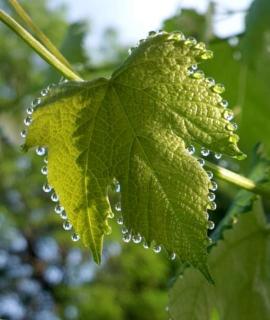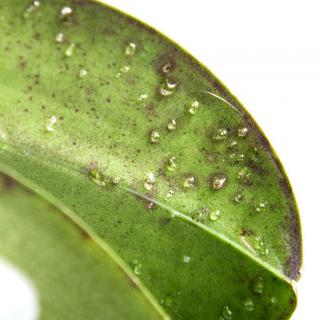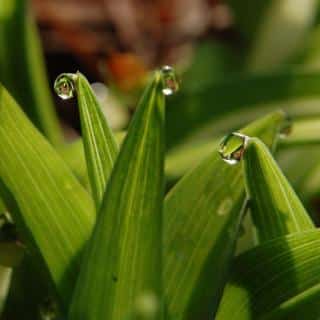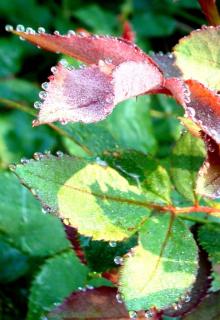

Guttation is how plants expel excess water or nutrients through tiny openings on leaves and stems. and water content.
Key facts about guttation:
Name – guttation
Common name – crying plant,
weeping leaves, teary plant, dewdrop
Type – plant physiological process
Occurrence – often
Observation time – early morning
Affects – houseplants & low-lying plants
This biological process enables plants to restore balance between their nutrient intake and needs.
→ Recently, science is realizing plants use guttation to communicate!
 Guttation occurs when a plant oozes water and minerals out from perfectly healthy leaves, stems, and sometimes even flower petals.
Guttation occurs when a plant oozes water and minerals out from perfectly healthy leaves, stems, and sometimes even flower petals.
It takes place when roots of a plant absorb more water than the plant actually needs.
Tiny, specialized cells on the surface of a leaf or stem are connected to veins and sap channels of the plant. This cluster of cells works as a nozzle. It releases water from the plant’s vascular system to the outside, forming drops that look like dewdrops.
This process where excess pressure is released from inside the plant is called guttation.
 Hydathodes are usually placed around the rim or tips of leaves, on the leaf surface, or at junctures between leaves and stems.
Hydathodes are usually placed around the rim or tips of leaves, on the leaf surface, or at junctures between leaves and stems.About the term “Guttation”:
To understand why plants developed guttation as they evolved, it helps to brush up the following:
Hydathode nozzles are one of the biological tools plants use to regulate pressure inside them.
Water used to transport nutrients up and down the stems and leaves is called sap. But there are more uses of water in a plant than simply transportation! Here is a short list of how a plant uses water:
If ever you’ve opened a fresh coconut, you must have noticed that when the hull is slit, drilled or broken, coconut water spurts out. The pressure inside the coconut is higher than the pressure of the air around it. You can also see happen when slitting open a watermelon: the last few inches simply split open on their own.
Thanks to a combination of chemical reactions, tissue structure and cell components, a plant is able to control water in and around it.
Guttation is one of the ways excess pressure is released. If not for this, the plant might burst at weak spots of veins and leaves!
 First off, not all plants guttate. For those that do, there’s a chance of seeing guttation in the following situations:
First off, not all plants guttate. For those that do, there’s a chance of seeing guttation in the following situations:
Plants breathe at night and still need sap to flow up and down the plant. Guttation takes over to force sap and water up when transpiration stops being effective.
When the air is near or above 100% relative humidity, it’s impossible for a plant to sweat.
It isn’t a common reaction, but guttation is one way of helping the plant evacuate excess water around roots. It’s a coping the plant uses to protect roots from rotting.
Seedlings and young plants tend to guttate more than older, more established plants.
 Gummosis and latex flow are similar to guttation in that fluids are also expelled from the plant through controlled interfaces.
Gummosis and latex flow are similar to guttation in that fluids are also expelled from the plant through controlled interfaces.
Bleeding, resulting from a wound to the plant, is different.
Dew and dewdrops are something entirely different, but are also useful to plants. Plants can maximize dew without being responsible for creating it.
Read also:
Guttation can even reach the point where sap drips to the ground. It can leave hard-to-remove stains on almost every surface, indoors and out!
So hose it away outside, and wipe it up indoors.
Wowww I fell on a gold mine of information. Absolutely love the way things are explained with examples. I can feel the author’s own interest and excitement about guttation while reading this hahhaha
It is a fascinating topic, and once you’ve learned about it, a drop on a leaf becomes much more than poetry!
Dear Sir,
I want to use 2 pictures from your website for my book on guttation. Please allow me to reuse the same. Thanks.
Sanjay Singh
MizanTepi University, Ethiopia